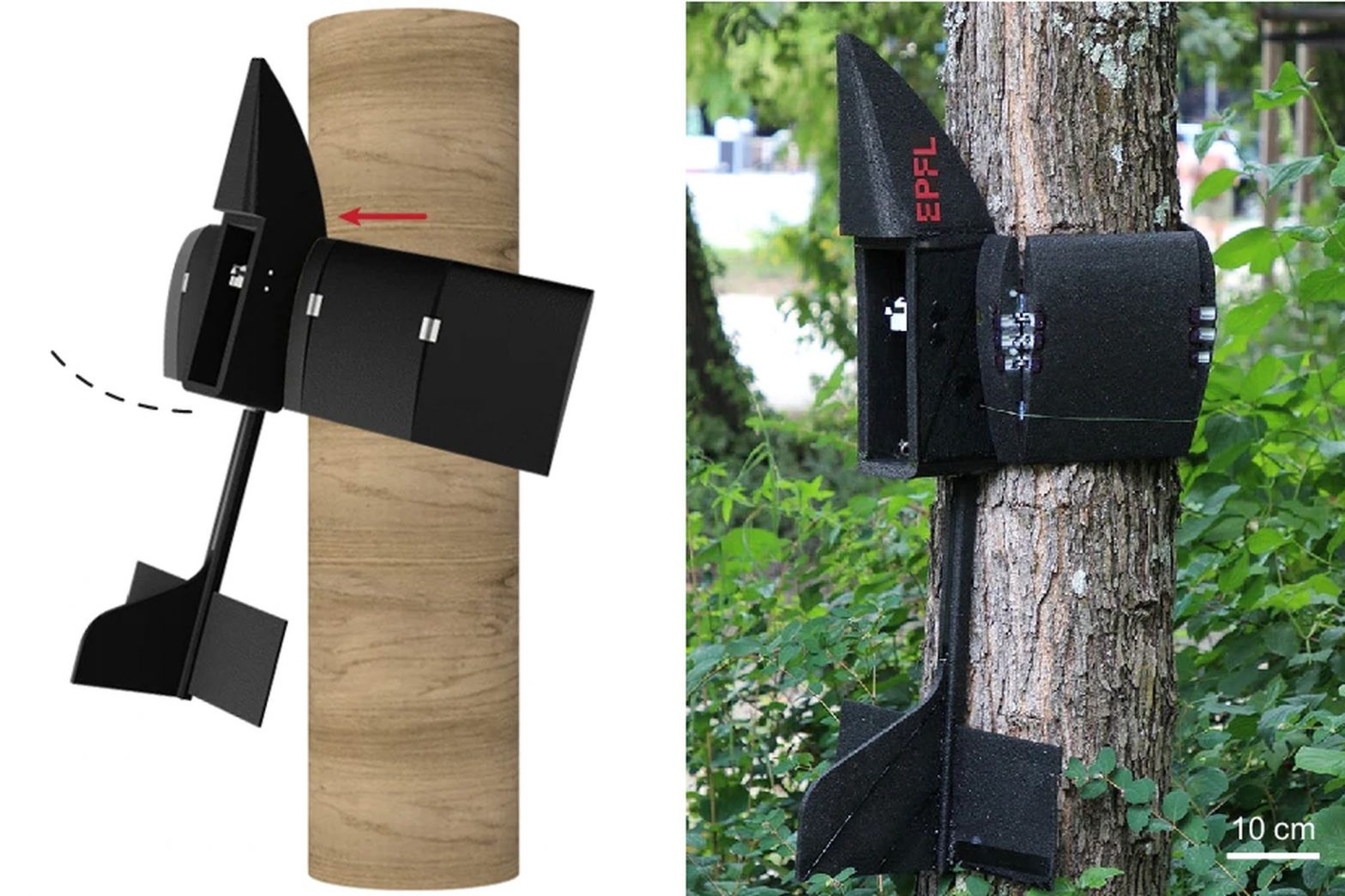/
The UAV emulates the behavior of bats and owls, grabbing onto structures using its wings to remain perched high above the ground.
Share this story
:format(webp)/cdn.vox-cdn.com/uploads/chorus_asset/file/25534993/crashperch_drone1.jpg)
Instead of hunting for a runway, researchers have built an unmanned aerial vehicle (UAV) that can land by crashing into trees or poles and wrapping its grippy wings around them to prevent a fall. It’s an unorthodox approach, but one that could make it easier to position surveillance or inspection equipment in hard to reach areas.
The UAV, which its designers from the Laboratory of Intelligent Systems at the Swiss Federal Institute of Technology (EPFL) have called the PercHug, is yet another robot built to emulate a behavior seen in nature: bats and owls using their wings to both fly and climb or perch onto trees.
The PercHug robot is designed with dual-purpose hinged wings that remain rigid and outstretched allowing the UAV to fly but also become flexible when a tension wire is released.
:format(webp)/cdn.vox-cdn.com/uploads/chorus_asset/file/25535022/crashperch_drone2.jpg)
As explained in a recently published paper in the journal Nature, the lightweight 550g UAV features an “upturned nose design” that causes the craft to reorient itself vertically when it begins to fall after a crash. The impact of the crash also releases the tension wire causing the UAV’s spring-loaded wings to wrap around the structure and remain perched on it — most of the time.
Even with fishing hooks added to the outer segment of the wings to improve the grip, the PercHug UAV only successfully remained attached to a tree or a pole 73 percent of the time. And that was during tests where the UAV made impact after a short, gentle glide.
The unique approach of repurposing the wings for a safe landing through perching eliminates the need for additional landing mechanisms. That will allow the UAV to be built lighter, which will potentially expand its payload capacity, and how far it can fly before targeting a tree.
A higher success rate will be needed before expensive equipment like sensors or cameras can be deployed by the UAV. The researchers also plan to expand the UAV’s capabilities with avionics and control surfaces as in its current form it’s just a manually launched glider with no steering capabilities. They also want to come up with a way for it to unperch on its own and take to the skies again all on its own.
